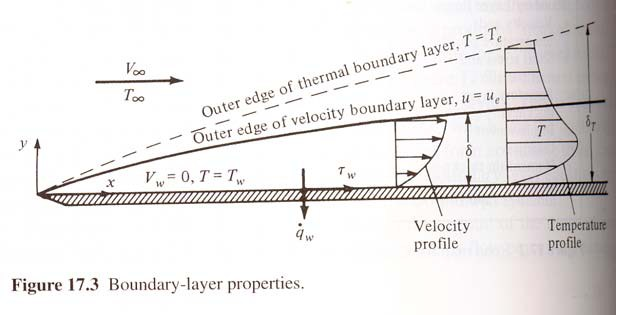Approach
The Hanley solver does solve for the boundary layer and potential flow (in a way we will think about later). However, it only gives us full access to the potential solution, with limited information on the boundary layer. To give us more information we will use two programs (in the form of applets accessed from the internet). These applets are solving the boundary layer equations (which
represents a branch on your model chart). We will not go into the details of these equations, but look into Anderson and find what assumptions these equations are based on, and add these to your model chart.
Select the applets "Boundary Layer Applets + Convection" and wait for the panel to be filled with 8 buttons. Be patient - it takes a few seconds for the applets to respond. Some of these applets are solving the boundary layer equations (which represents a branch on your model chart). We will not go into the details of these equations, but after your tutorial look into Anderson and find what
assumptions these equations are based on, and add these to your model chart.
Preparation: Brief Introduction to Boundary Layers
Friction is important in a thin region, called the boundary layer, adjacent to the aerofoil surface. This region is called the boundary layer. Outside this region the flow is irrotational, and for low speed flow can be approximated very well by a potential model. The pressure felt at the wall is usually the same as that felt at the edge of the boundary layer. (Note that this makes the potential solver very useful for computing the lift of an aerofoil).
A schematic of the boundary layer taken from Anderson is shown in the figure below. Think about the flow structure shown. Chapters 15 and 17 of Anderson are useful resources for the boundary layer topic.
